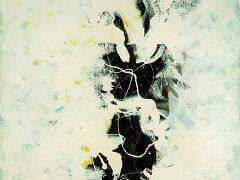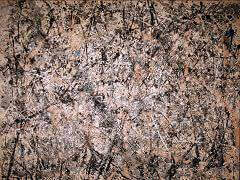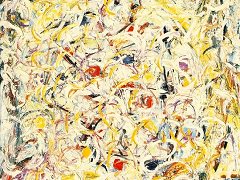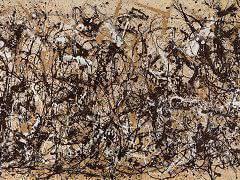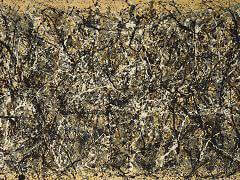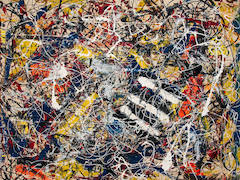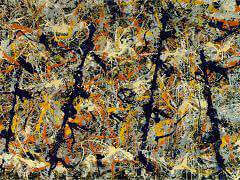Landscape with Steer, 1937 by Jackson Pollock
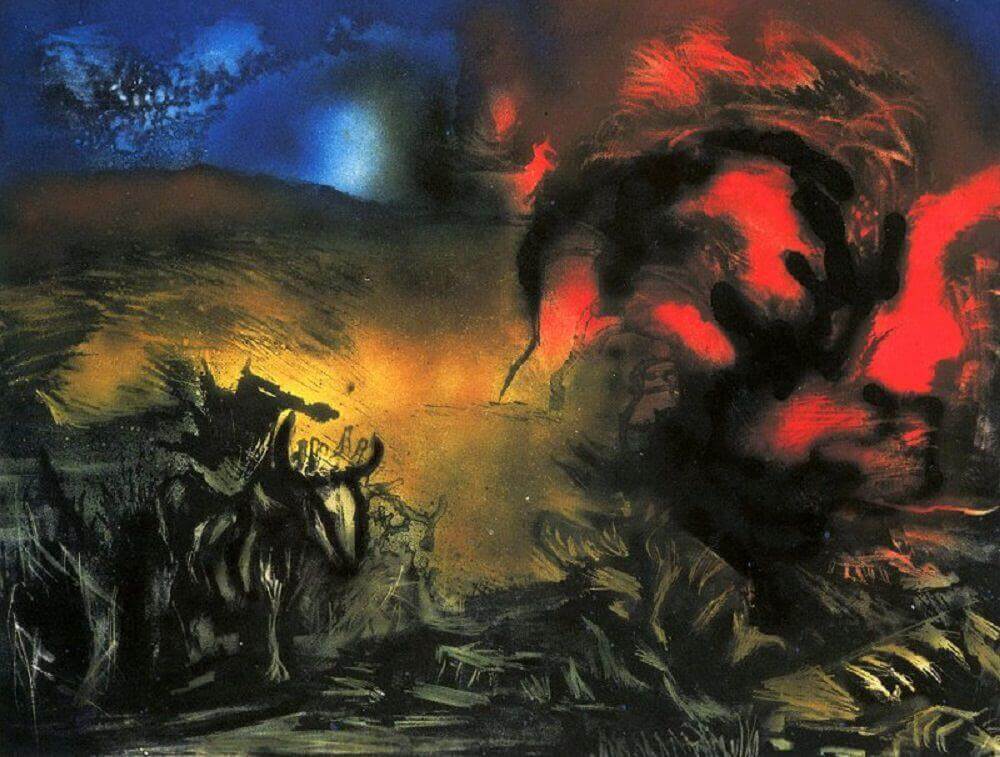
Another influence that Pollock discovered during his student years was at the New School for Social Research, where he first encountered the work of Mexican muralist José Clemente Orozco. Among other prominent muralists,
including Diego Rivera and David Alfaro Siqueiros (whom Pollock met in Los Angeles in 1932 and who set up an experimental studio in New York in 1936), was to become an important
influence on Pollock's work. In the short-term, Orozco's use of Lithograph inspired Pollock to do the same in his abstract piece Landscape with Steer. In the longer term, however, the scale of Orozco's projects
instilled in the young artist a desire to create huge, sensational pieces, examples of which he only attempted years later.
In 1935 Pollock was enrolled onto the Work Progress Administration's Federal Art Project (FAP). This project, set up as part of the New Deal economic reforms that were intended to tackle the aftermath of the Great Depression
that struck in 1929, sought to offer a salary to out-of-work artists, in return for which they would create pieces to be displayed in public institutions, such as schools, hospitals and libraries. In its 8 year mandate, the
FAP is reputed to have produced 200,000 works, mostly paintings, posters and murals. More importantly, it provided young artists such as Pollock with a dependable income at a time when Abstract art was still in its infancy
and almost unsalable, thereby allowing them to develop their style and produce some of the most iconic American art of the period.



